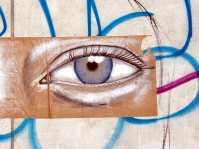The Canadian arctic is strangely gripping. I only spent a couple weeks there but I think of it often and I know I'll go back some day. I'd like to go further north and see the Arctic Ocean and I'd also like to see Torngat Mountains National Park at the northern tip of Labrador. After those, if there's still time in my life, I'd also like to explore the Yukon.
The stickiness of Canada's north-country is the theme linking the five people profiled by one of Canada's preeminent historians in this, his fiftieth and final book. Born in the Yukon, Pierre Berton shows himself to be a "prisoner of the North" as well with many personal asides and reminiscences woven into his biographies of the five protagonists.
This book was recommended to me by Rob before I went on my trip but I didn't have time to read it until now and I'm glad events transpired in that way. Only one of the five people in the book spends his time in the tundra area of my canoe trip and I felt Berton's description of that country was too negative. I understand that the tundra is harsh and unforgiving, but it is also surprisingly beautiful and deeply moving. Other than that minor detail I thoroughly enjoyed the book.
The people profiled are: mining tycoon Joe Boyle (1867-1923); Arctic explorer Vilhjalmur Stefansson (1879-1962); extensive traveller and facilitator of Arctic exploration Lady Jane Franklin (1791-1875); eccentric woodsman John Hornby (1880-1927); and noted Canadian poet Robert Service (1874-1958).
There are some neat parallels between Joe Boyle and current environmental debates. While the Klondike gold rush was going on he went up and was the first to bring in large-scale, mechanized mining. The sort of mining that strips the earth and wreaks havoc on the environment. Although no one cared about it back then, it was hard not to think of the debate about the oil sands in Alberta and about gas fracking in the United States while reading his story. Apparently the damage done to the waterways up there is still clearly visible.
I'd never heard of Vilhjalmur Stefansson before reading this book, but I must say he was a bad-ass ahead of his time. Although he met with much criticism over the years (not all unfounded) it's hard not to be impressed with two things about him. First, unlike everyone else at the time, he did not consider the Inuit to be mindless savages. Instead he learned from them and as a result was able to thrive in the difficult environment he was exploring. He even adopted their diet, eating nothing but meat and fish for long periods of time without any ill-effects (pro-tip: This only works if you eat the whole animal, including offal, and if you eat at least some of the meat raw. Meat has enough vitamin C to stave off scurvy but cooking destroys it). The second bad-ass thing about Stefansson was that he had super-human strength and endurance. He would run for hours and days behind his dog sled, covering over twenty thousand miles in his career.
Lady Jane Franklin was probably the female equivalent of Stefansson of her day in terms of being a bad-ass. Over her life she travelled all over the world, spending lots of time in Australia with her husband when it was still a penal colony. She continued travelling extensively until just shortly before her death. And this was all at a time when travel was rather difficult. When her husband became lost-presumed-dead looking for the northwest passage she spent many years and much money organizing and financing voyages to discover his fate. She eventually succeeded and as a side effect the world's knowledge of the Canadian Arctic was improved dramatically.
I knew the tragic story of Hornby already from David Pelly's: "Thelon: A River Sanctuary" which I read in Fort Smith just before going on my canoe trip. Berton provides more detail in his book but I didn't learn anything new of significance. However, other than my complaint about his negative depiction of the tundra, I did find Berton's retelling to be much more entertaining than Pelly's.
I've read two of Robert Service's poems before without knowing anything about the author. They're his two most famous: The Shooting of Dan McGrew and The Cremation of Sam McGee. He wrote thousands, none of them considered high art by the literary establishment of the time, but those two especially remain popular. Personally I find the rhyming schemes and his willingness to make up words to fit quite enjoyable. Berton's biography of Service is more personal than the other four. Service lived in Whitehorse when Berton was a child there and more than once he came to dinner at Berton's family's home. Berton also did an extended interview with Service for the CBC shortly before Service died.
This book is an excellent piece of Canadiana and I heartily recommend it. I think I'll seek out some other books by Pierre Berton in the future.


